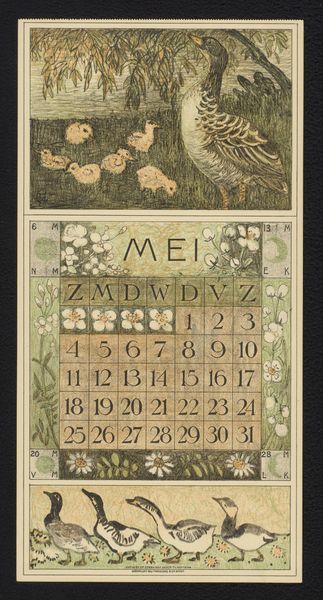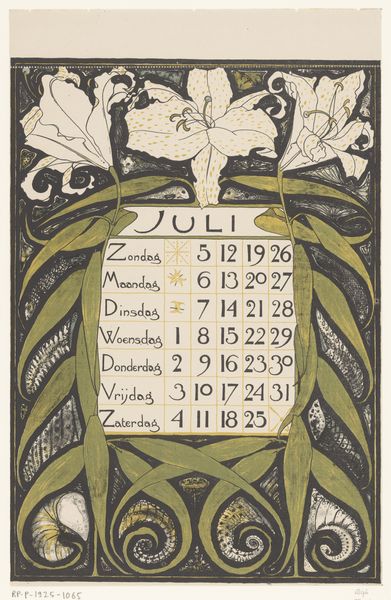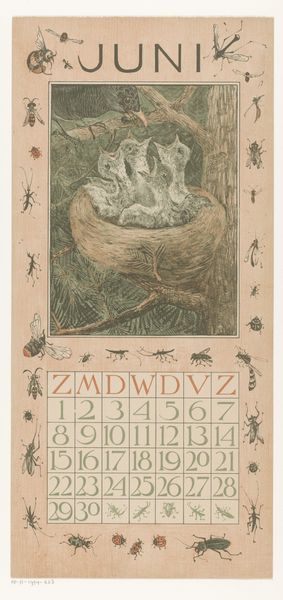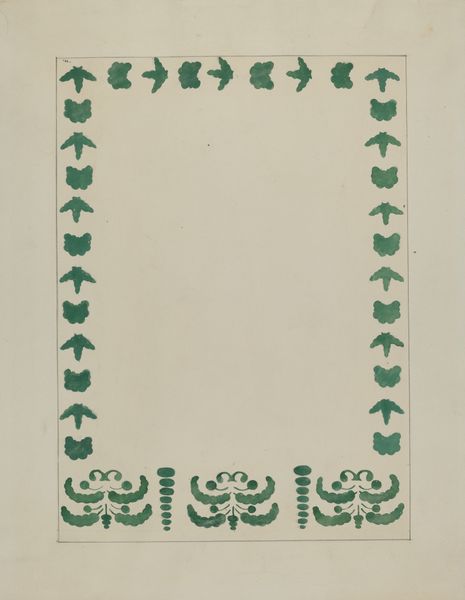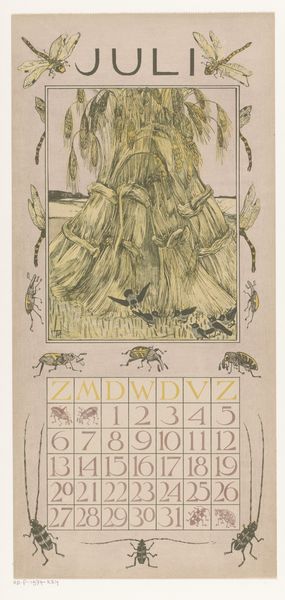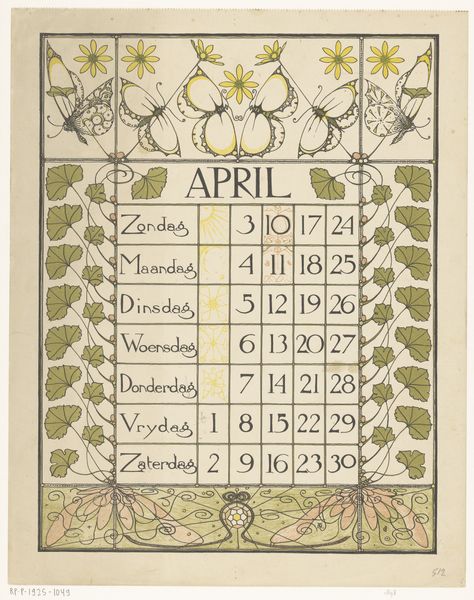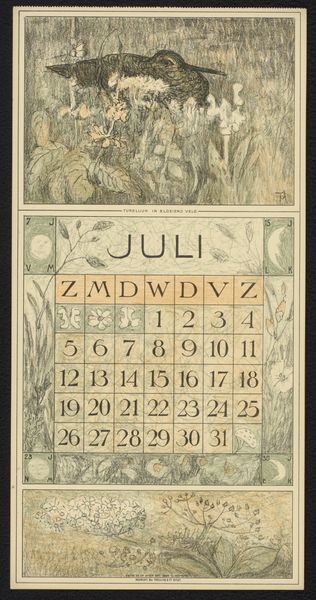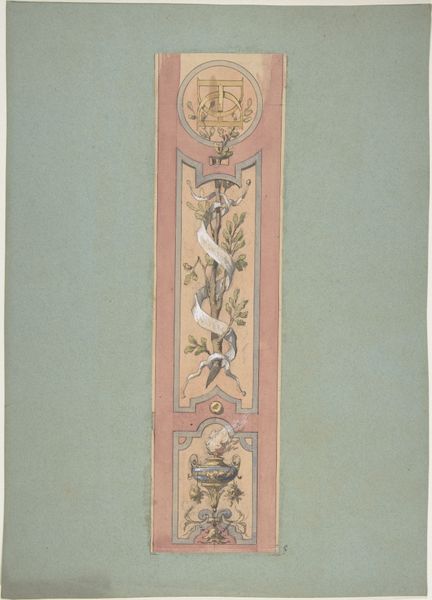
mixed-media, print, watercolor
#
mixed-media
#
art-nouveau
#
water colours
# print
#
landscape
#
watercolor
#
decorative-art
#
watercolor
Dimensions: height 375 mm, width 241 mm
Copyright: Rijks Museum: Open Domain
This calendar for May 1896 was created by Theo Nieuwenhuis. The image presents a decorative arrangement of floral motifs and figures. Notice the prominent use of fruits and foliage; this is a recurring symbol of fertility, abundance, and the cyclical nature of life. The stylized, rhythmic arrangement evokes ancient Roman frescoes from Pompeii. Consider the garlands and festoons, reinterpreted here in a distinctly Dutch Art Nouveau style. This motif is found in various forms throughout art history, from classical antiquity to the Renaissance, always carrying associations of celebration and the ephemeral beauty of nature. Even the playful figures at the bottom echo this theme. Reaching upwards, they engage with the natural world above, embodying a childlike wonder. The image subtly suggests the perpetual return of spring and its promise of renewal, deeply embedded in our cultural memory. This calendar page, therefore, is not merely a record of days but an echo of recurring cultural themes.
Comments
No comments
Be the first to comment and join the conversation on the ultimate creative platform.
